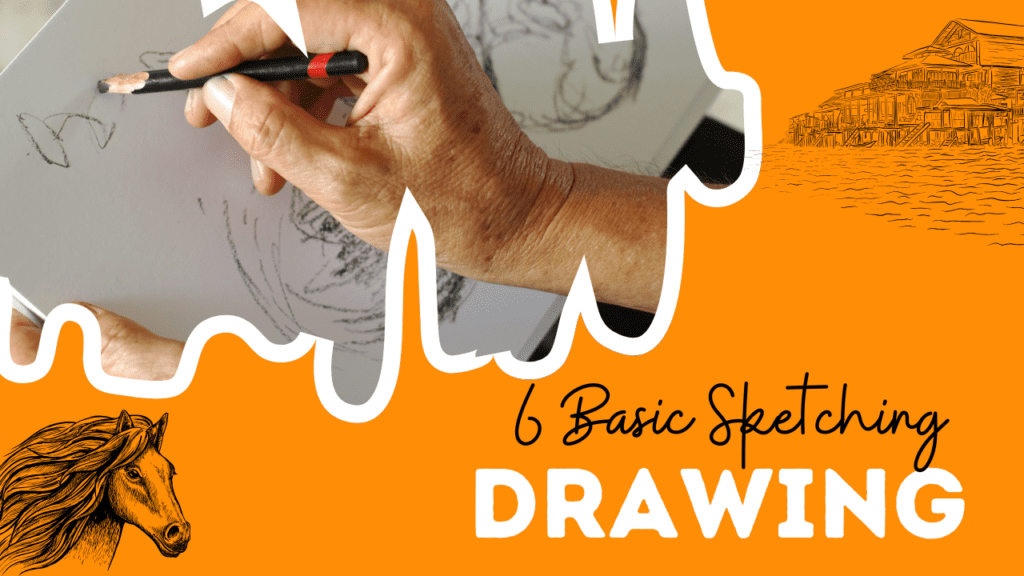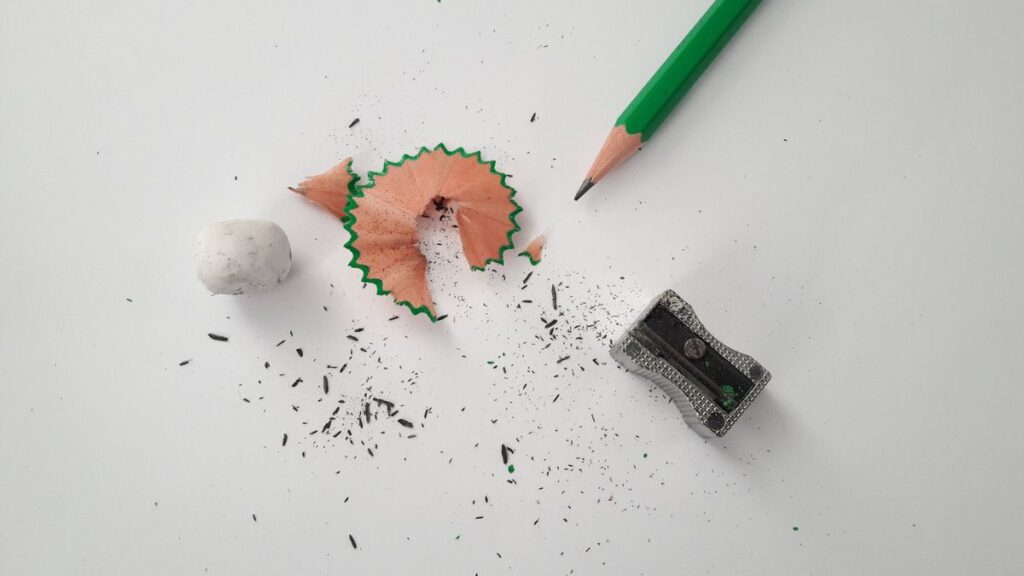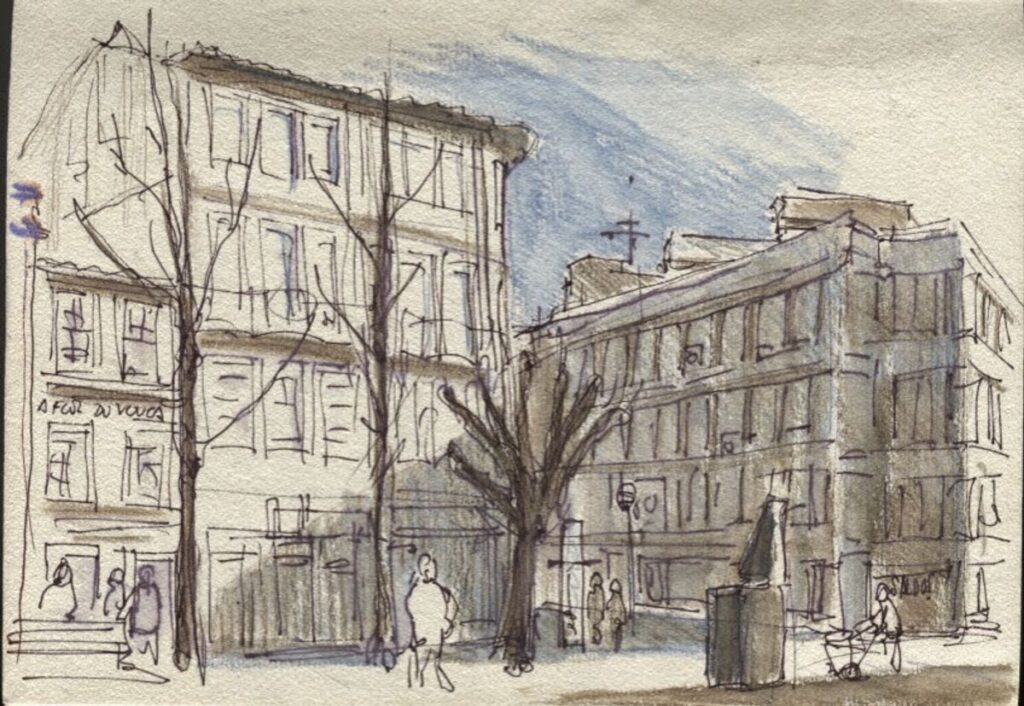Learning about basic sketching techniques requires both imagination and technical skill. Understanding the fundamentals of sketching is key, whether you are a beginner or want to improve your drawing skills. In this tutorial, we’ll look at six fundamental factors for improving your drawing skills. From pencil selection to the details of light and shadow, these fundamentals will lay the groundwork for you to establish your own style and bring your artistic thoughts to life.

Key Takeaways
- The first step in the drawing is to choose the appropriate pencil, as different grades contribute to varied textures and hues.
- Hatching is a fundamental method for adding depth and character to designs using parallel lines.
- Observation is essential for capturing the essence of the topic, necessitating attention to detail and a sense of form.
- Mastering light-dark shading is critical for producing realistic and dynamic sketches with a sense of volume.
- Chiaroscuro, the technique of using great contrasts between light and dark, can significantly improve the three-dimensionality of a sketch.
1. Pencil

When I first began exploring basic sketching techniques, the pencil was my go-to tool. It is the foundation of any artist’s weapons, and understanding how to use it is essential for improving your ability to create art. A pencil provides for a variety of expressions, including light, delicate lines, and forceful, intense strokes.
Choosing the right pencil is an important stage in making art. Different grades of pencils produce various tones and textures, which can help bring your simple sketching ideas to life. Here’s a quick look at pencil grades:
- H (Hard): Light and soft lines for early sketching.
- B (Blackness): darker lines for shading.
- HB: A dynamic range of options for a wide range of uses.
2. Hatching
When I’m sketching, hatching is my go-to technique for creating texture and shading. It’s all about drawing parallel lines close together. The closer the lines, the darker the area appears. Cross-hatching adds another dimension by layering lines at an angle to the first set, which can give even more depth to my sketches.
Hatching can be quite meditative. The rhythmic motion of drawing line after line builds up the form and tone gradually, allowing for a controlled and deliberate development of the image.

The key to successful hatching, in my experience, is consistency in line spacing and angle. The effect is created by the space between the lines rather than just the lines themselves. Here’s a short breakdown of the procedure:
- Start with a light touch to establish the form
- Gradually increase pressure for darker tones
- Keep the lines parallel for uniform shading
- Use cross-hatching for deeper shadows
Understanding the light scheme is crucial. It helps me to enhance the tonal modulation and bring out the bright areas in my drawings. Whether I’m working on a still life or a landscape, hatching, and cross-hatching are techniques that remain evergreen and adaptable to any medium.
3. Observation
Knowing how to manage sketching is about more than simply the lines you draw on paper; it’s about how you perceive the world around you. Observation will be essential for capturing the essence of your subject. It is about understanding the anatomy of objects, their proportions, and how light and shadow interact to produce shapes.
When I sketch, I make it a point to practice patience and take my time to look at my subject. This means studying the details, the way light falls across the surface and the overall structure. Here’s a simple list to help you focus your observational skills:

- Study the anatomy or structure of your subject
- Note the proportions and how they relate to each other
- Observe the light source and the shadows it creates
- Analyze masterpieces to understand composition and technique
By breaking down complex scenes into simpler shapes and forms, you can begin to understand and replicate them in your sketches. This approach not only improves your technical skills but also enhances your ability to communicate visually.
Remember, the goal is not to create a perfect replica but to convey a clear and precise representation of how something functions or appears. Whether you’re drawing from life or your imagination, keeping a keen eye on observation will elevate your sketching to new heights.
4. Light-Dark Shading
Achieving light-dark shading is a transforming ability for sketching. It’s all about understanding the logic of light and how it interacts with the subjects you’re drawing. Simulating chiaroscuro allows you to generate a vibrant three-dimensionality in your designs.
When I begin a new piece, I first set down a basic plan. Before I get into the details, I sketch out a basic framework and use a light-dark schematization to establish volume and depth.
To properly show light effects in my drawings, I pay special attention to tonal variations. This includes perfecting shadows and outlines, which can be accomplished using techniques like scumbling and scribbling art. The idea is to manipulate your lines to achieve the proper gradient and depth.

Here’s a simple breakdown of the steps I follow:
- Sketch a linear supporting structure.
- Fill in the outline with chiaroscuro shading.
- Adjust the density of lines to modulate light and dark areas.
- Enhance tonal modulation to highlight bright areas.
Remember, patience is crucial as you practice these techniques. Over time, you’ll see a noticeable improvement in your drawing skills.
5. Chiaroscuro
Chiaroscuro is not just a fancy term; it’s the essence of bringing your sketches to life. It’s about mastering the dance of light and shadow to create a sense of volume and depth on a flat surface. Chiaroscuro (from Italian chiaro, “light,” and scuro, “dark”) is a visual arts technique for representing light and shadow as they define three-dimensional things. Leonardo da Vinci, The Virgin of the Rocks. Category: Arts and Culture.
When I sketch using chiaroscuro, I start with a preliminary scheme, laying down the basic structure of light and dark. This foundational work is vital for establishing the overall tone of the piece.
Understanding the logic of light is key. Light has a code, a pattern that I follow to simulate dynamic three-dimensionality. By studying the light scheme, I can enhance the tonal modulation, making the bright areas pop against the darker tones.
Here’s a quick rundown of how I approach chiaroscuro in different subjects:
- Drawing a landscape: I analyze the composition, coordinating the dimensional levels of geometric shapes on the plane.
- Drawing animals: I focus on materializing corporeality, like the wrinkled skin of an elephant, by emphasizing texture and form.
Remember, chiaroscuro isn’t just for classical art; it’s a technique that can elevate your sketches, no matter the subject.
6. Line Matrix
When I dive into sketching, I see the line matrix as the backbone of my drawings. It’s the grammatical matrix of the drawing, providing structure and form to my artistic expressions. Understanding the line matrix is crucial for mastering sketching techniques, as it allows me to create drawings that truly resonate with vibrancy and life
The line matrix is not just about the lines themselves, but also about the spaces between them. It’s about the rhythm and flow that give a sketch its unique character.

In engineering drawing, for example, different types of lines serve specific purposes. Here’s a quick rundown:
- Hidden Lines: Indicate features not directly visible.
- Centerlines: Show symmetry and axis of cylindrical features.
- Dimension Lines: Annotate measurements between extension lines.
Final Thoughts on Basic Sketching Techniques
Each type of line in a sketch, whether it’s a hidden line or a centerline, adds a layer of meaning and clarity. By practicing with these lines, I can improve my ability to convey depth, perspective, and proportion in my sketches. It’s a challenge, but one that’s essential for any budding artist to overcome.
On our website, you can explore the detailed world of ‘Line Matrix’ and appreciate the beauty of each pencil stroke. Whether you’re an experienced artist or just getting started, our tools are designed to help you improve your talents and inspire your creativity. Don’t pass up the opportunity to browse our huge portfolio, tutorials, and free downloadable content. Visit us now and start your artistic journey!
FAQ’s
Q1. What are the major differences between sketching and drawing?
Sketching is often characterized by quick, loose lines and is used to capture basic shapes and compositions while drawing involves more detailed and refined work, focusing on accuracy and shading to create a finished piece.
Q2. What are the 5 basic skills of drawing?
The 5 basic skills of drawing include understanding perspective, accurate proportions, light and shadow, composition, and mastery of drawing tools.
Q3. How can I improve my sketching speed?
To improve sketching speed, practice regularly to build muscle memory, use confident and decisive strokes, and focus on capturing the essence of the subject rather than details.
Q4. What is chiaroscuro in art?
Chiaroscuro is an art technique that employs strong contrasts between light and dark to create the illusion of volume in modeling three-dimensional objects and figures.
Q5. What is hatching in sketching?
Hatching in sketching is a technique that uses closely spaced parallel lines to create texture and tonal effects, simulating the appearance of shading and dimension.



Pingback: Easy Ear Drawing (Simple Steps) Tutorial in 2024
Pingback: Easy Hatching and Cross Hatching Techniques
I’ve been following this blog for years and it’s amazing to see how much it has grown and evolved Congratulations on all your success!
Thanks I have recently been looking for info about this subject for a while and yours is the greatest I have discovered so far However what in regards to the bottom line Are you certain in regards to the supply